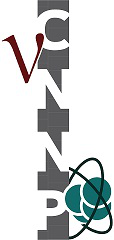Speaker
Description
The GEANT4 [1] Hadrontherapy model [2] was used to predict the outcome of several reactions of interest to the NUMEN project (LNS/INFN, Catania, Italy). In this project, Double Charge Exchange (DCE) reaction matrix elements of interest to neutrino double-beta decay physics are to be experimentally assessed. In the last phase of the NUMEN project, very large intensity beams from the CS cyclotron accelerator (LNS) are to be used. In association with the MAGNEX spectrometer, which will identify the species of the DCE projectile-like fragment (PLF), a gamma-array spectrometer will assist the identification of the specific nuclear state which has been populated, by coincidence/anti-coincidence with the gamma transitions of the PLF. With the high beam intensity, a large random coincidence rate is expected which could contaminate the DCE data. This contamination would come from uncorrelated nuclear reactions of all types of exit channels which can originate from the same beam/target combination of the entrance channel. Besides evaluating the radiation risks to detectors and electronic equipment, GEANT4 simulations help to develop the gamma array project through the prediction of its response to gamma rays and neutrons from all these possible nuclear reactions. In this contribution, the results for several reactions will be shown, providing a general panorama of the issues that can affect the NUMEN project. In an attempt to validate these simulations, the gamma-ray and neutron spectra obtained with the Eden liquid scintillator array was measured during the Numen8 experiment, in which the 18O+76Se reaction was investigated at 15 AMeV. The results show some good correspondence with the simulation in some respects, like the order of magnitude of the gamma-ray rate and spectrum shape, but also puzzling results in other aspects, such as the random coincidence background rates of neutron and gamma and their relative ratios. Other types of simulation software have also been employed by the collaboration and were compared. Further validation tests should be performed for a more general and in depth investigation.
[1] http://geant4-userdoc.web.cern.ch/geant4-userdoc/UsersGuides/PhysicsReferenceManual/html/
[2] G. A. P. Cirrone, et al., Frontiers in Oncology, vol. 7, Sept. 2017.

